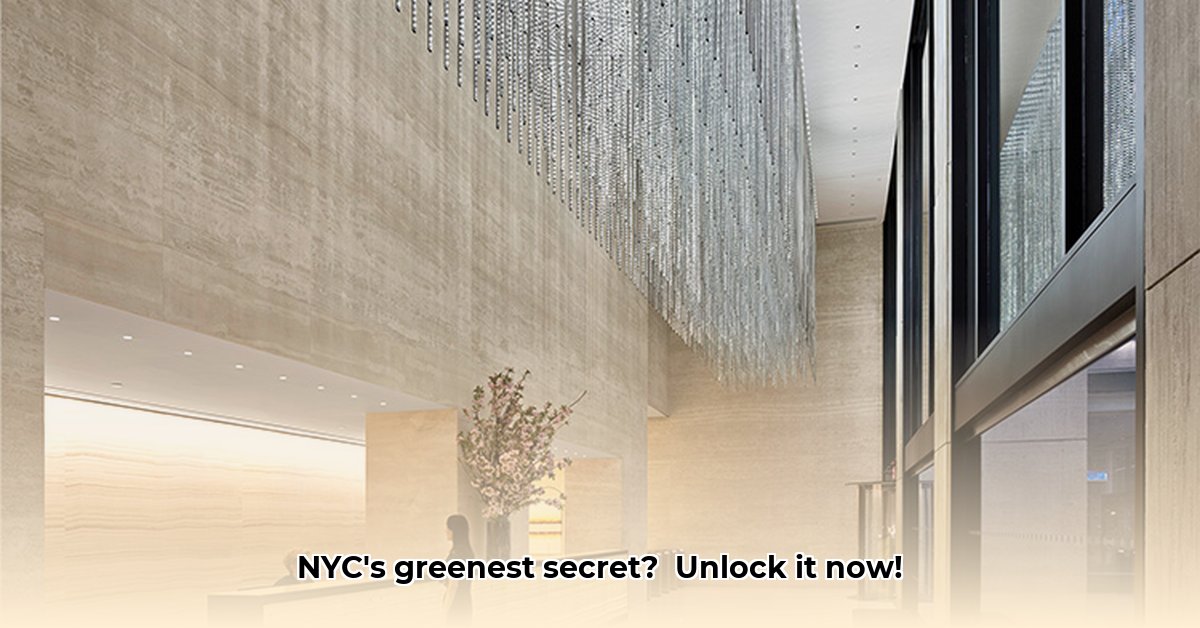
1133 6th Avenue: A Case Study in Sustainable Commercial Real Estate
1133 6th Avenue, situated in the heart of Midtown Manhattan, stands as a compelling case study in sustainable commercial real estate. Its achievement of LEED Gold certification under the rigorous v4 standard signifies a commitment to environmentally responsible building practices that translate into both environmental and financial benefits. This analysis explores the building's key sustainability initiatives, their impact on operational efficiency and tenant attraction, and the broader implications for future development.
LEED Gold Certification: A Benchmark for Green Building
Achieving LEED Gold certification under the v4 standard represents a significant accomplishment, reflecting the building's adherence to stringent criteria for sustainable design and operation. This certification isn't merely a label; it's a testament to the integration of innovative sustainability strategies across various aspects of the building's design and management. The certification process requires meticulous documentation and verification, ensuring the building's performance meets the highest environmental standards.
Sustainable Initiatives: A Multifaceted Approach to Green Building
1133 6th Avenue's success is attributable to a multifaceted approach encompassing several key sustainable initiatives:
- Green Roof: The building's green roof significantly reduces stormwater runoff, minimizes the urban heat island effect (reducing cooling demands), and provides enhanced insulation, leading to energy savings.
- High-Efficiency HVAC Systems: Advanced HVAC technology optimizes energy consumption for heating, ventilation, and air conditioning, resulting in significant reductions in operational costs.
- Water-Saving Plumbing Fixtures: Low-flow fixtures minimize water consumption throughout the building, contributing to both cost savings and reduced environmental impact.
- Renewable Energy Sources: A commitment to offsetting 100% of energy use with renewable energy sources demonstrates a strong dedication to carbon neutrality, aligning with growing market demands for environmentally responsible buildings. This minimizes the building's carbon footprint and enhances its appeal to environmentally conscious tenants.
Financial Performance and Tenant Attraction: A Symbiotic Relationship
While initial investments in green building technologies may be higher, the long-term financial benefits are substantial. 1133 6th Avenue demonstrates a strong correlation between sustainable practices and financial success. The building's green features contribute to:
- Reduced Operating Costs: Energy and water savings directly translate into lower operational expenses, enhancing profitability. This is a quantifiable benefit that strengthens the investment case for sustainable practices.
- Enhanced Tenant Appeal: Sustainability is increasingly a priority for businesses, particularly in competitive markets like New York City. The building's green credentials attract high-quality tenants willing to pay premium rents for sustainable workspace. This is reflected in the building's high occupancy rates and strong tenant retention.
- Increased Property Value: Green buildings often command higher valuations in the market, reflecting the growing investor preference for environmentally responsible assets. This increased value translates into higher returns on investment for building owners.
Does going green pay off? Early indications from 1133 6th Avenue suggest a strong affirmative. The combination of lower operating costs and higher rental income points towards a significant return on investment (ROI) for the implemented sustainability initiatives. A detailed financial analysis, including methods like cost method ROI, focusing on long-term appreciation and cash flow, would be needed to fully quantify this benefit.
Tenant Value Proposition: Beyond LEED Certification
The building's LEED Gold v4 certification is further enhanced by pre-packaged LEED v4 Commercial Interiors Certification guidelines for tenants. This simplifies the process for tenants to achieve their own sustainability goals, reducing the cost and complexity of implementing environmentally responsible office spaces. This added value proposition is a significant competitive advantage in attracting and retaining high-profile tenants.
Future Implications and Risk Mitigation
The success of 1133 6th Avenue provides valuable insights for future green building development, but also highlights potential challenges:
- Maintaining LEED Certification: Ongoing maintenance and potential upgrades are essential to sustain the LEED Gold certification, necessitating a long-term commitment to sustainable practices.
- Technological Advancements: The rapid evolution of sustainable technologies presents both opportunities and challenges. Staying abreast of advancements and adapting building systems accordingly is crucial for long-term sustainability.
- Regulatory Changes: Changes in building codes and environmental regulations can influence operations and require proactive adaptation.
The building's management employs a proactive risk mitigation strategy, which includes regular inspections, proactive maintenance, diversified energy suppliers, and well-defined contingency plans to address potential issues. Such a strategic and adaptable approach is essential in the ever-evolving landscape of sustainable development.
Conclusion: A Blueprint for Profitable Sustainability
1133 6th Avenue serves as a compelling model demonstrating that integrating sustainable practices into commercial real estate development is not only environmentally responsible but also financially advantageous. The building's success underscores the value proposition of green building for both owners and tenants, offering a blueprint for future initiatives in the industry. Further research and case studies will better inform the ongoing dialogue on return on investment for similar sustainable development projects.